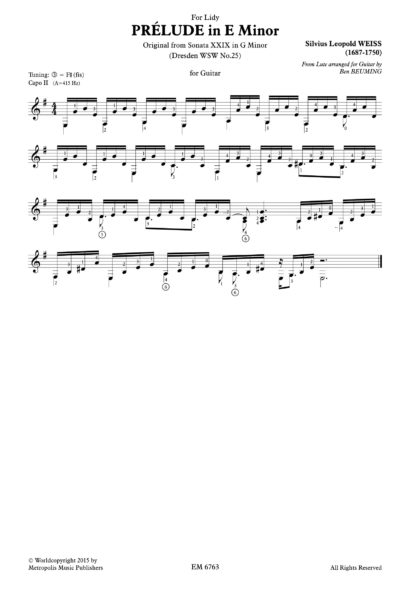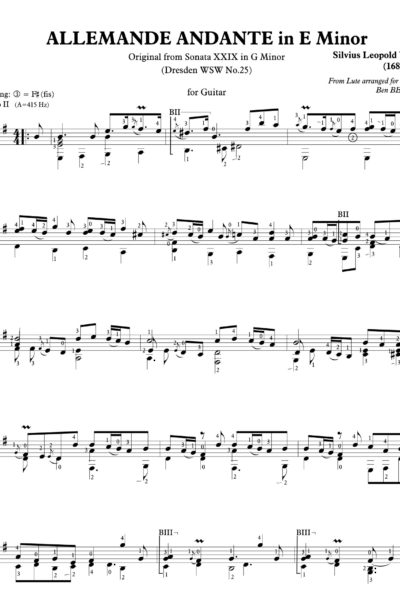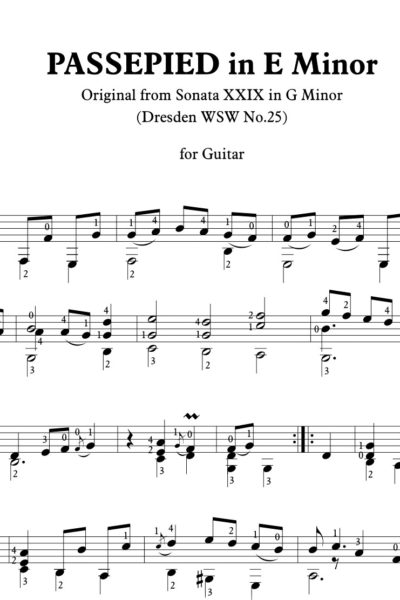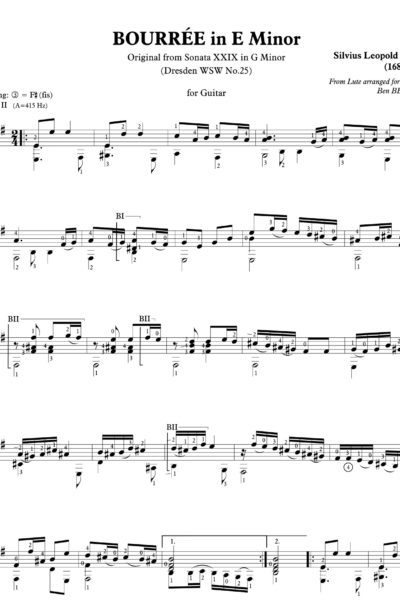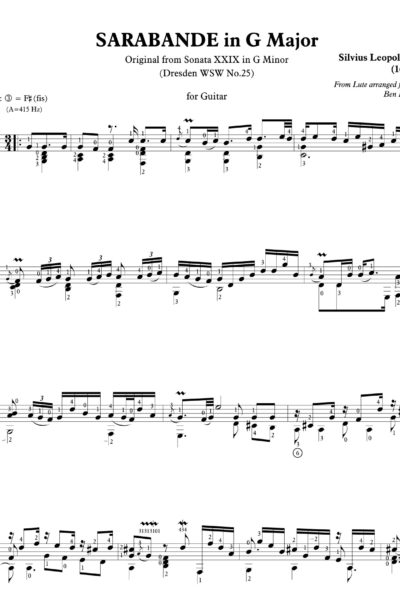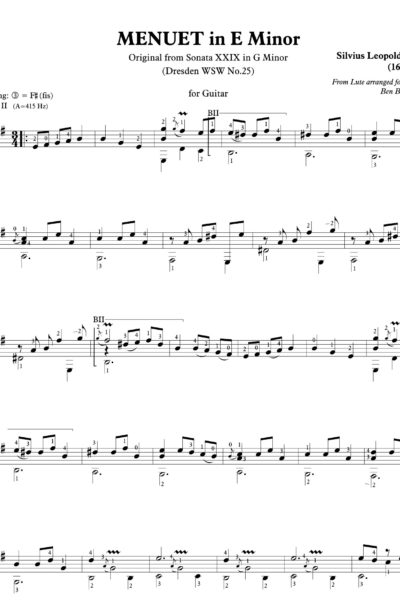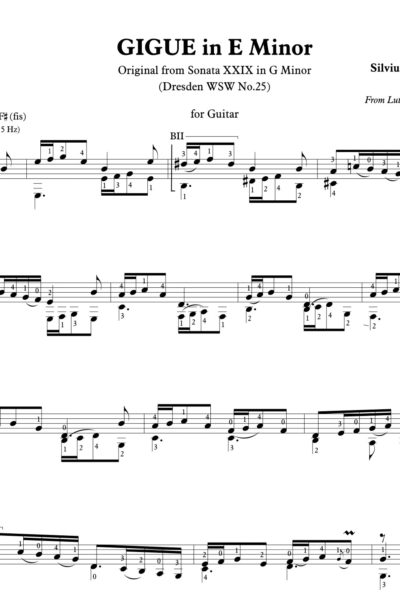Sonata XXIX (WSW 25)
Sonata XXIX comes from a set of tablature manuscript volumes in the Sächsisches Landesbibliothek in Dresden (Ms. Mus. 2841-V-1). There are five volumes with a total of 34 sonatas of Weiss for solo lute. The sonatas are ordered by key and further sorted by size or complexity. Sonata XXIX comes from Weiss’s middle ‘productive’ period, around 1720. The Sonata has seven movements: Prelude, Allemande (andante), Passepied, Bourée, Sarabande, Menuet, and it ends with a Gigue. There is another copy of this Sonata, known as Suite XIX, in a London Manuscript (British Library Ms. Add. 30387). The London version does not include a Prelude, and the Sarabande is completely different. The other movements are similar to those in the Dresden Manuscript. The Sonata in this Edition is based on the Dresden Manuscript.
The purpose of beginning a lute sonata with a Prelude is to introduce the specific key and the harmonic design of the sonata. However, not every sonata in the Dresden and London manuscripts has a Prelude. About one third of the 34 Dresden Sonatas opens with a Prelude, but only six of them may be considered truly integral to the sonata. The other preludes are composed in a rather ‘rudimentary’ style, as a model for the less experienced lute player to improvise on the central key and theme. The Prelude in this particular Sonata cannot be regarded as integral. It has been added later, either by the compiler of the volumes or perhaps by Weiss himself.
Originally, the Sonata is written in G minor, a key not often used by Weiss, but considered appropriate for playing the lute. With the guitar, however, the key is rather awkward. For ease and effectiveness of playing, I have transposed the Sonata a minor third lower to E minor. To create more concordance with the baroque tuning of the lute, the G string is lowered by a semitone to F sharp.
